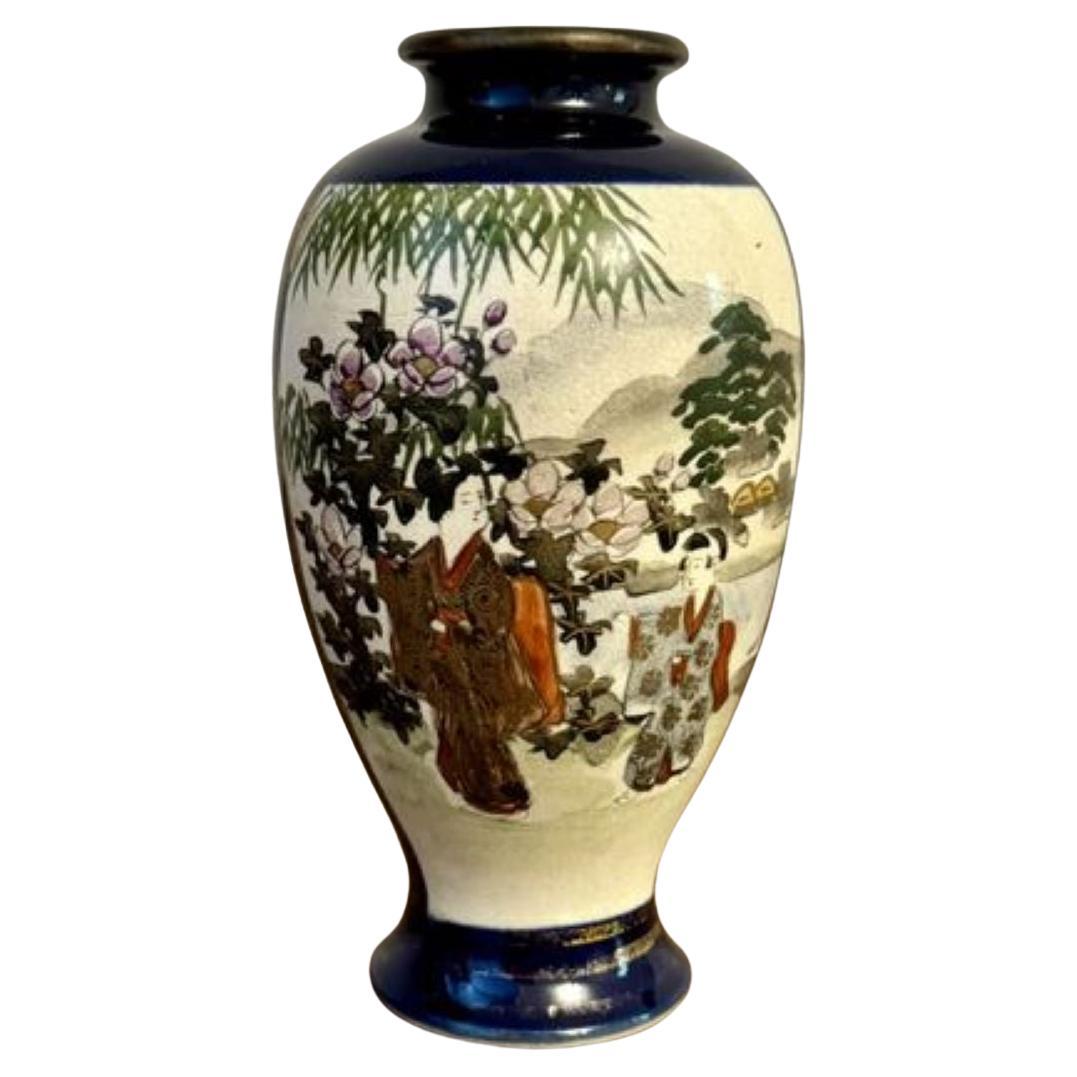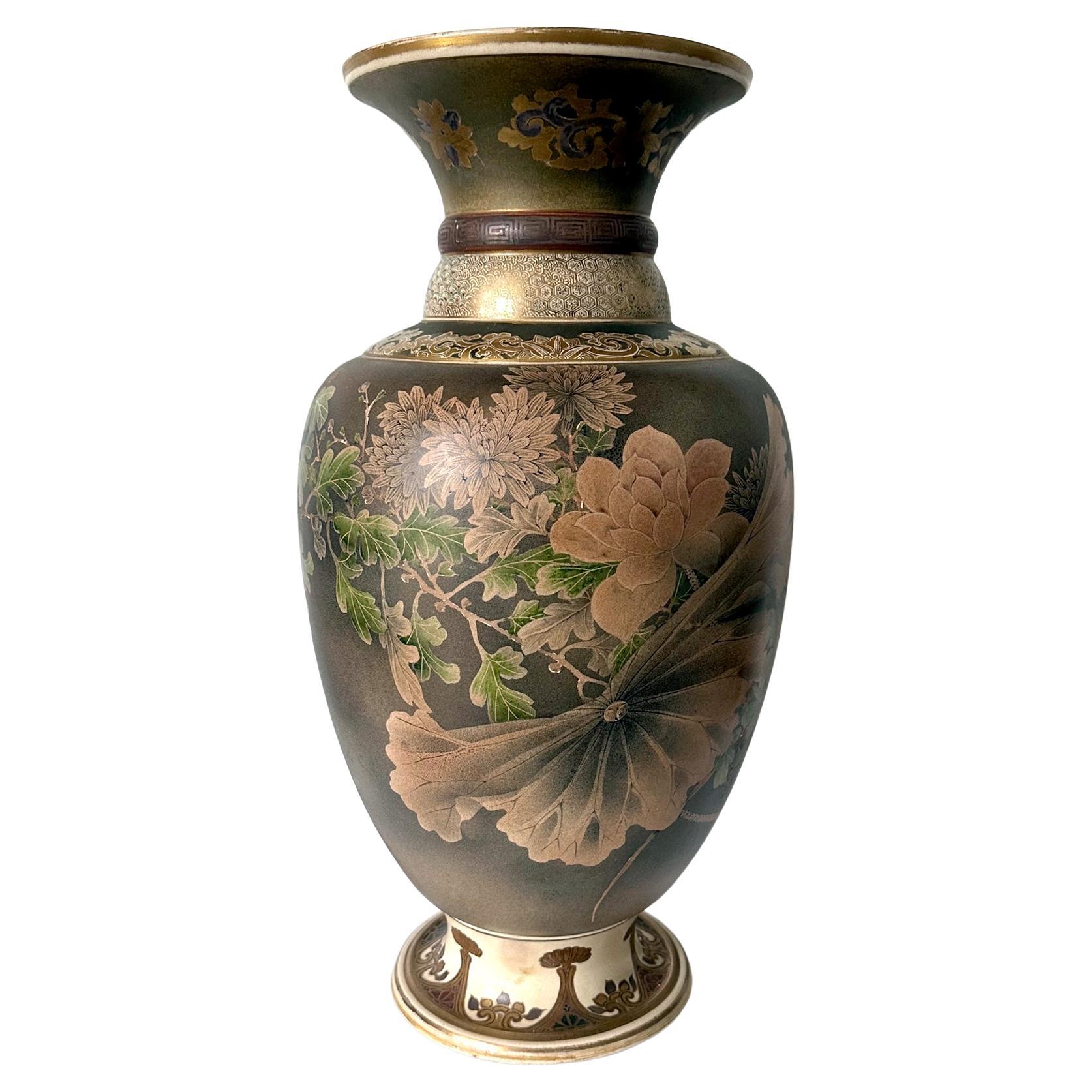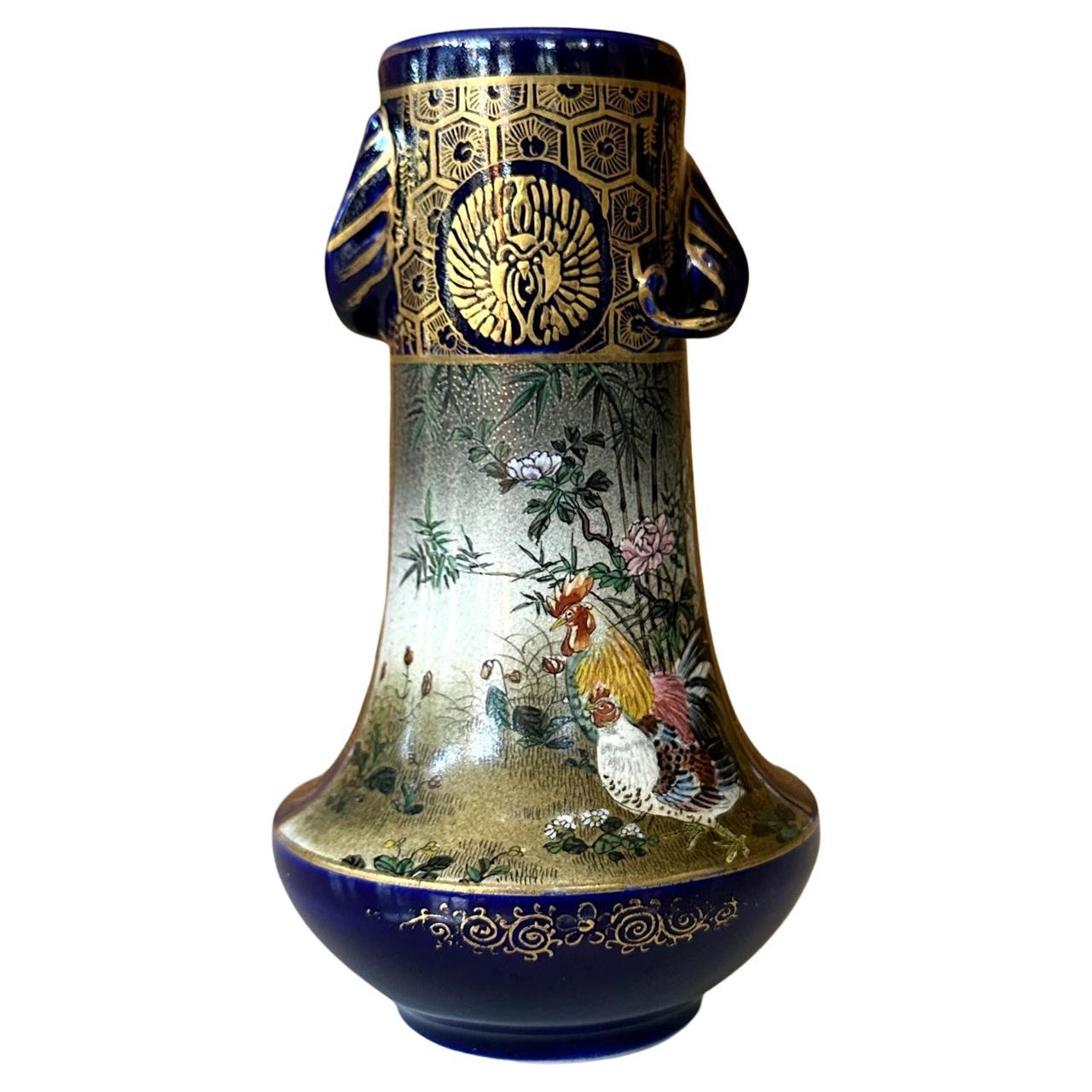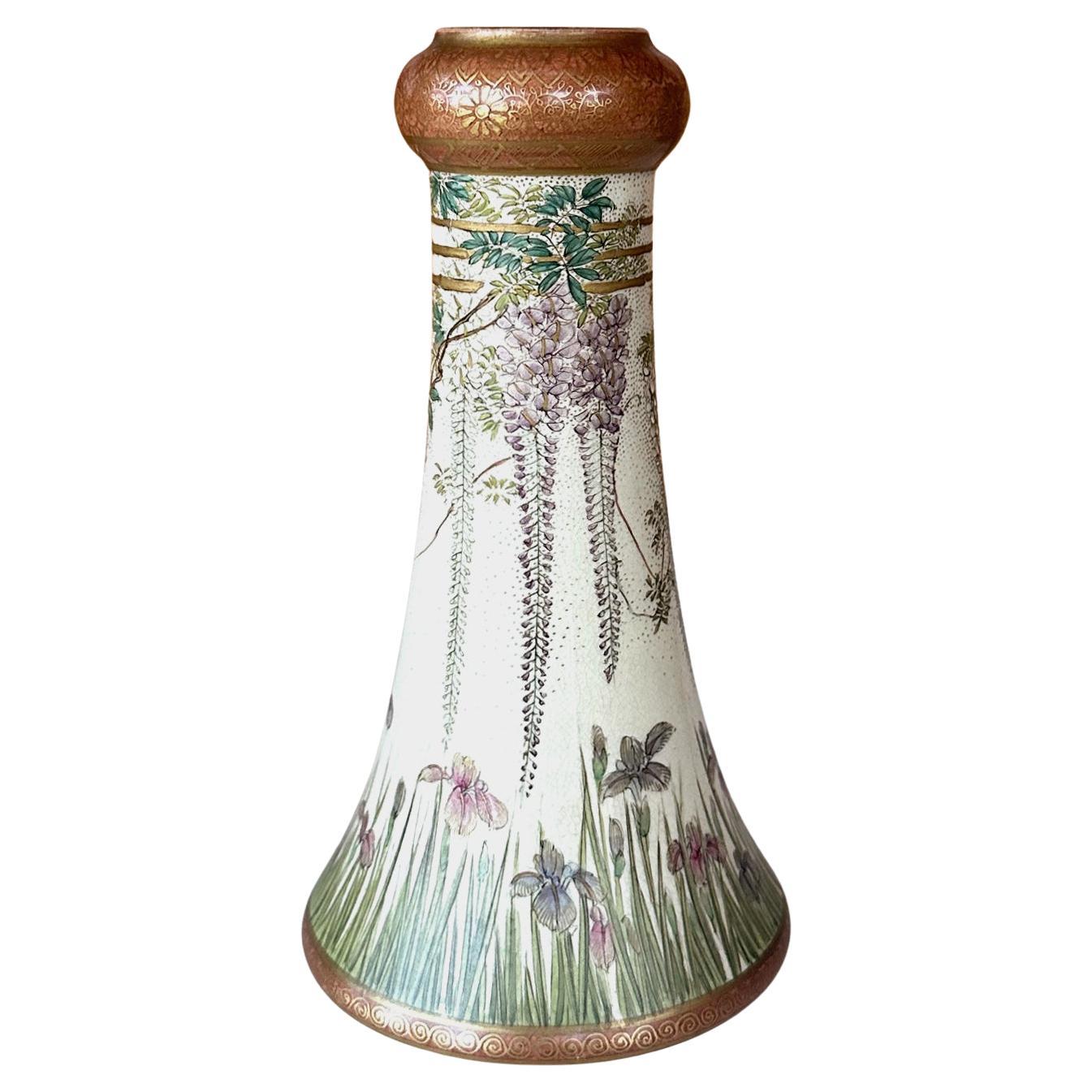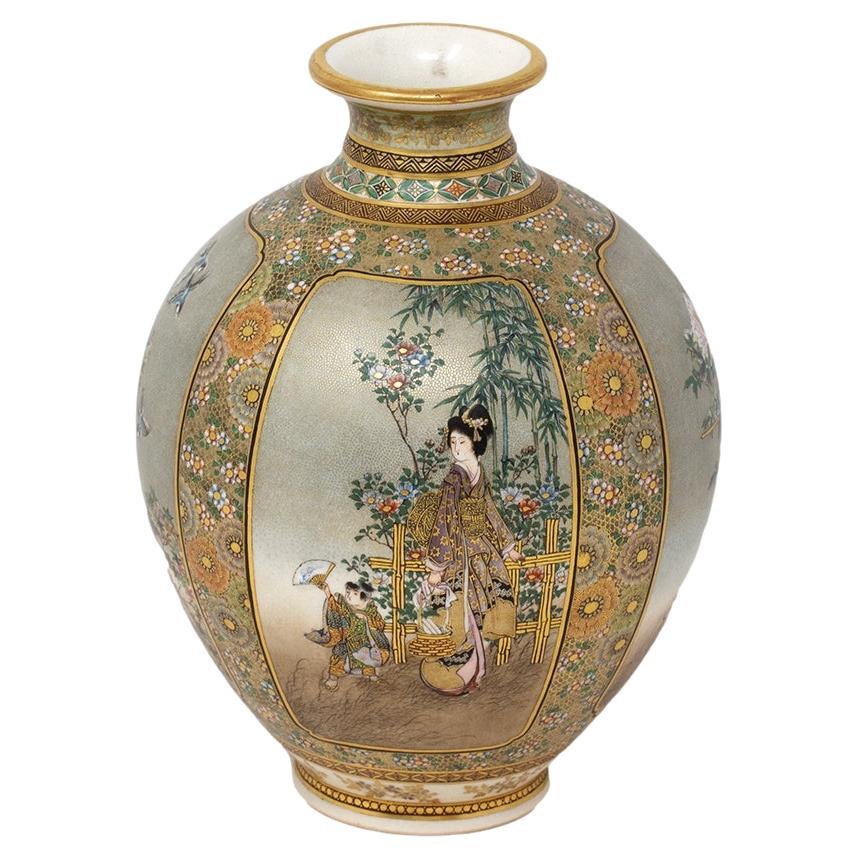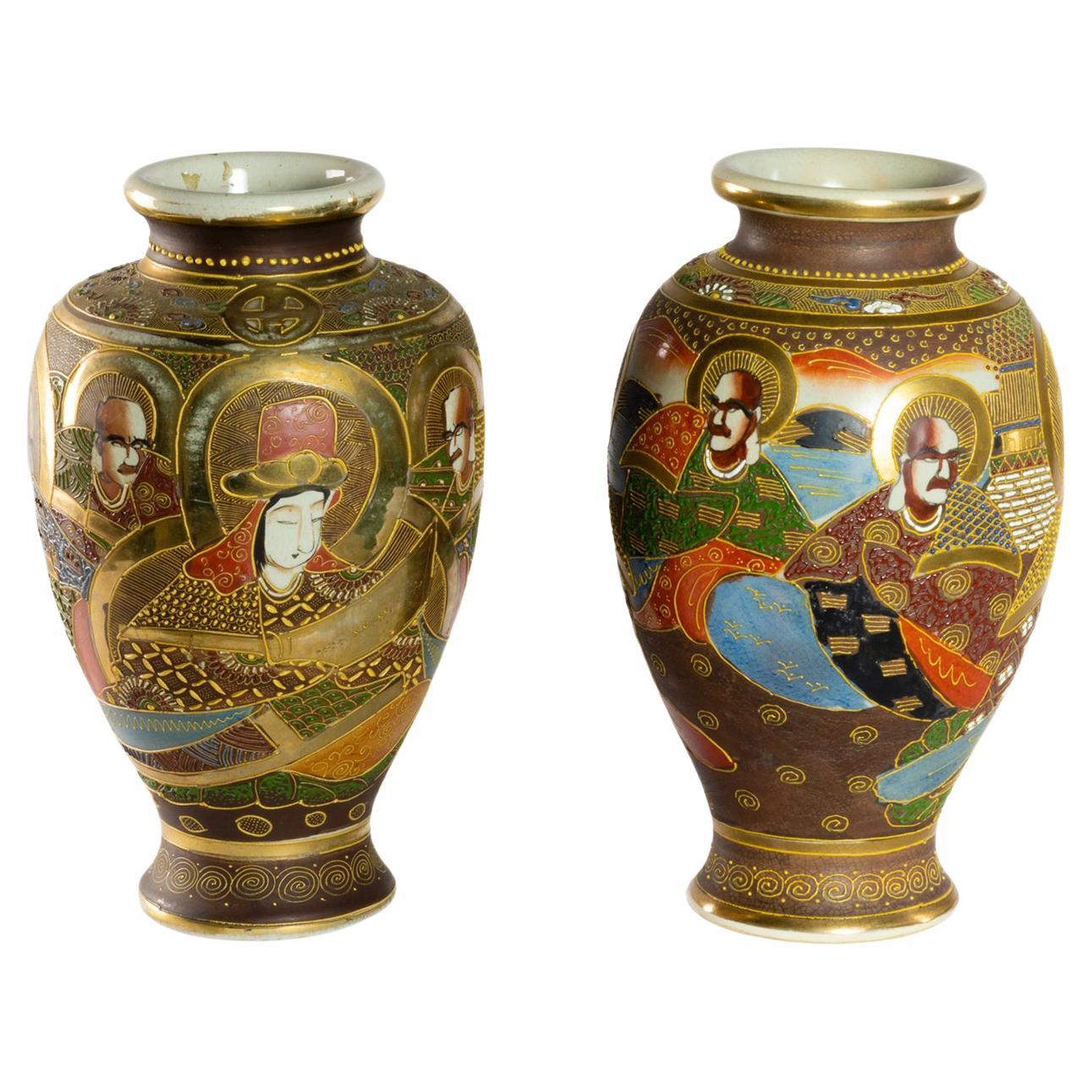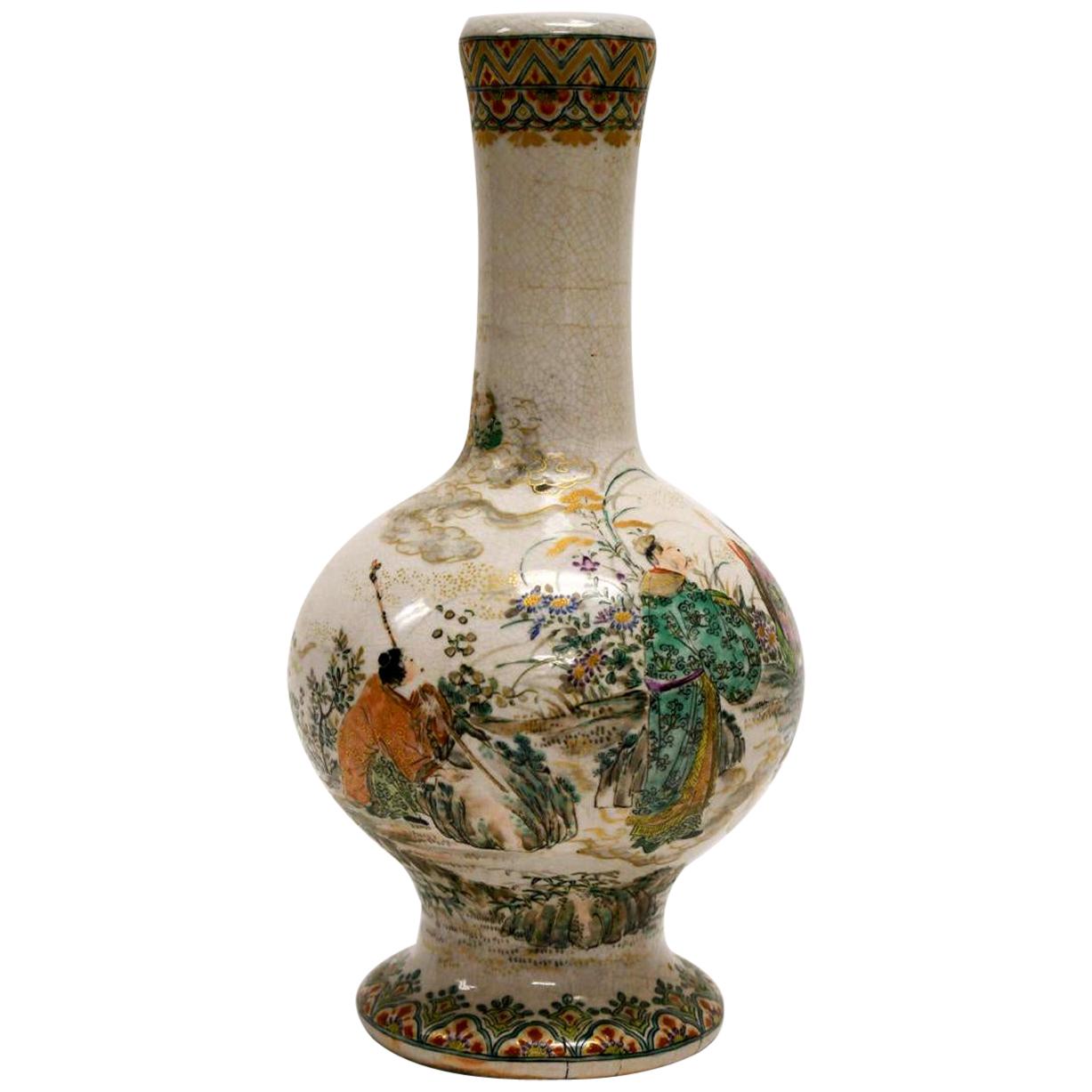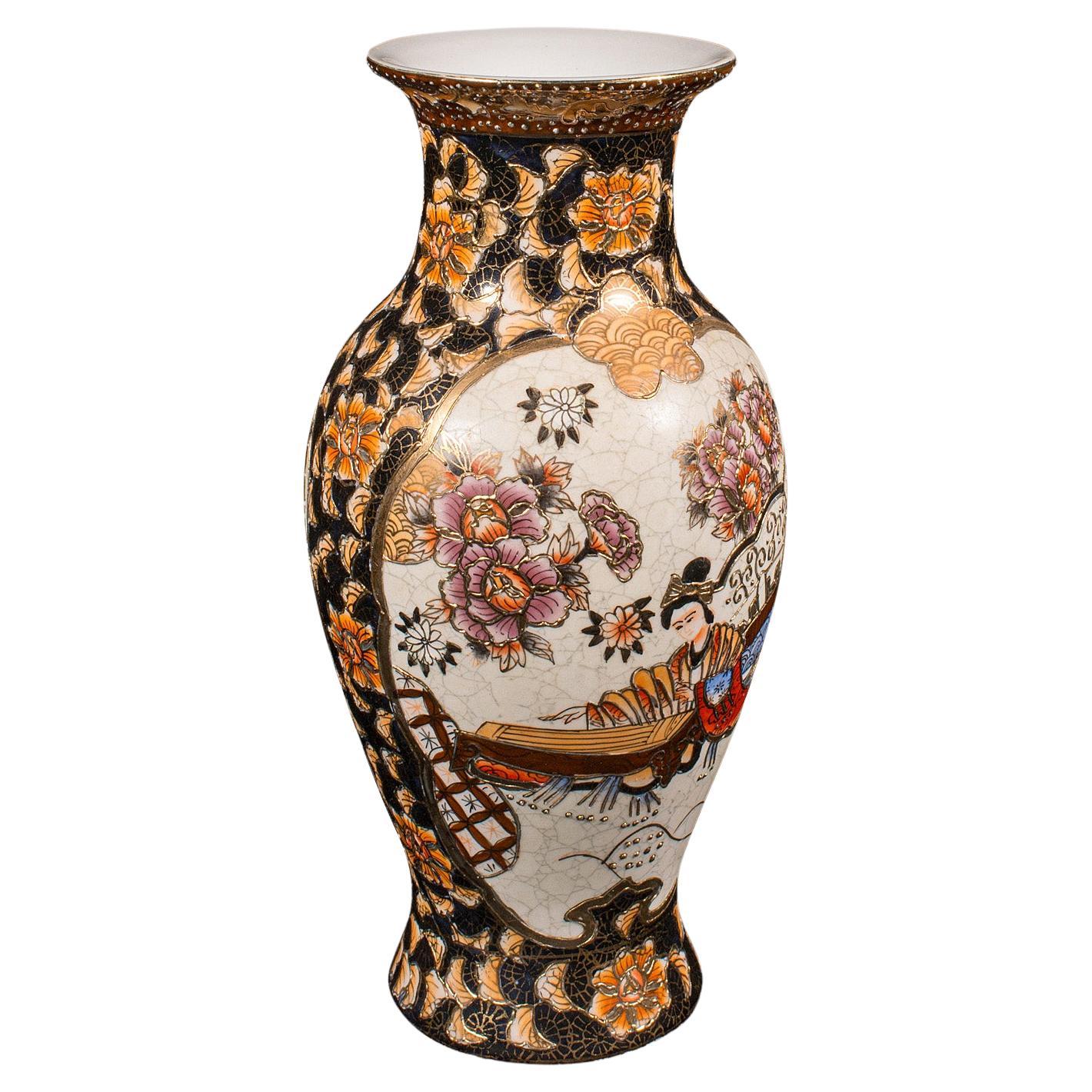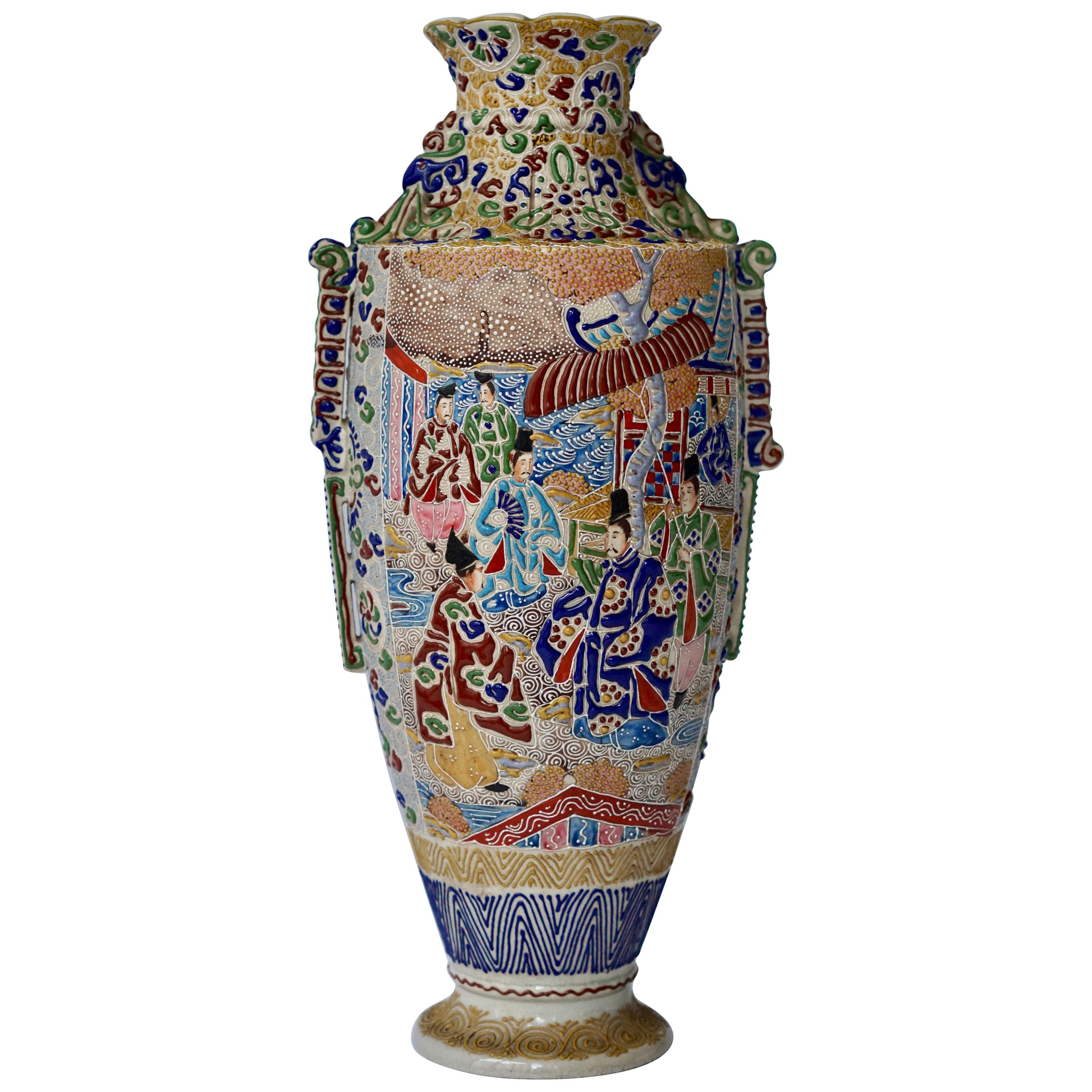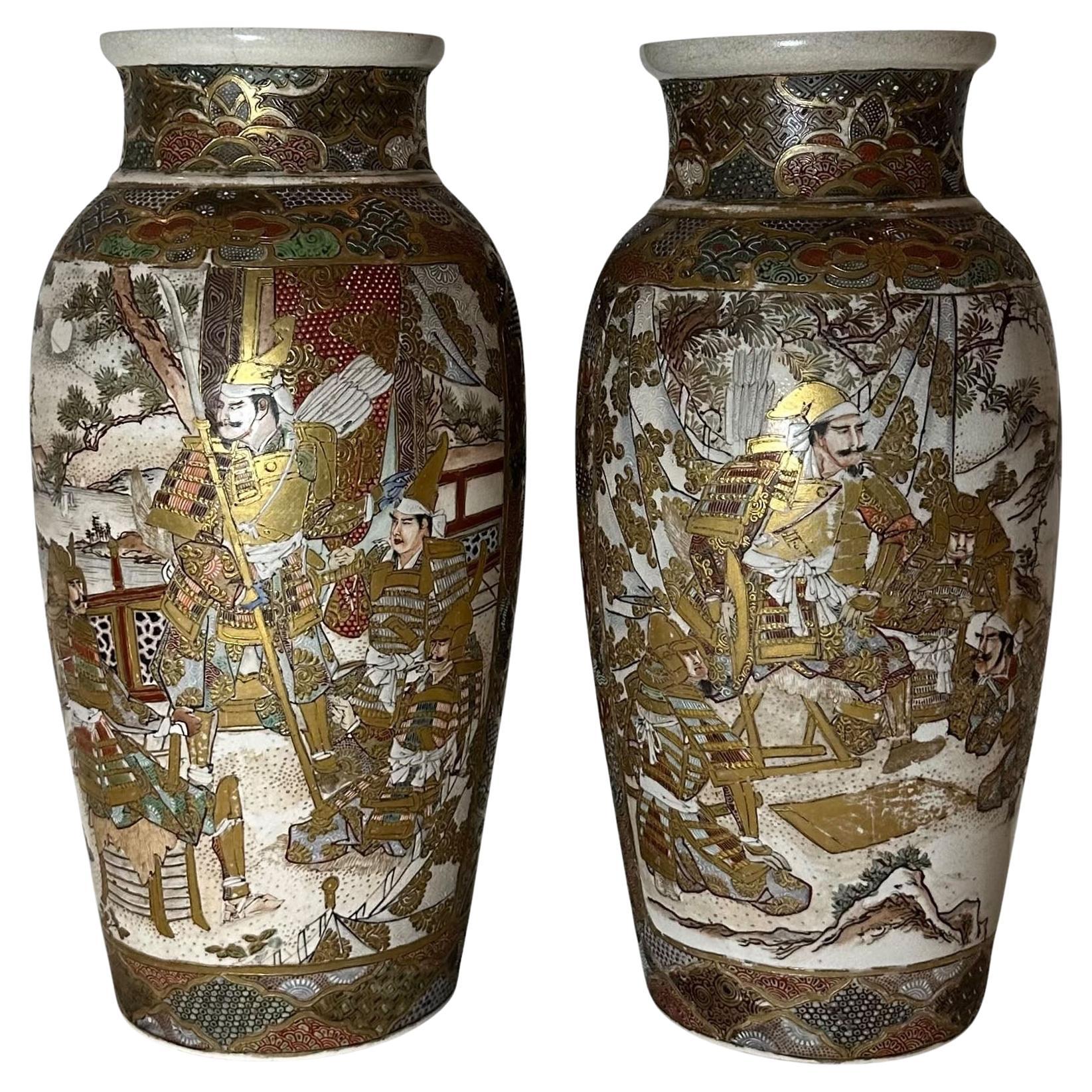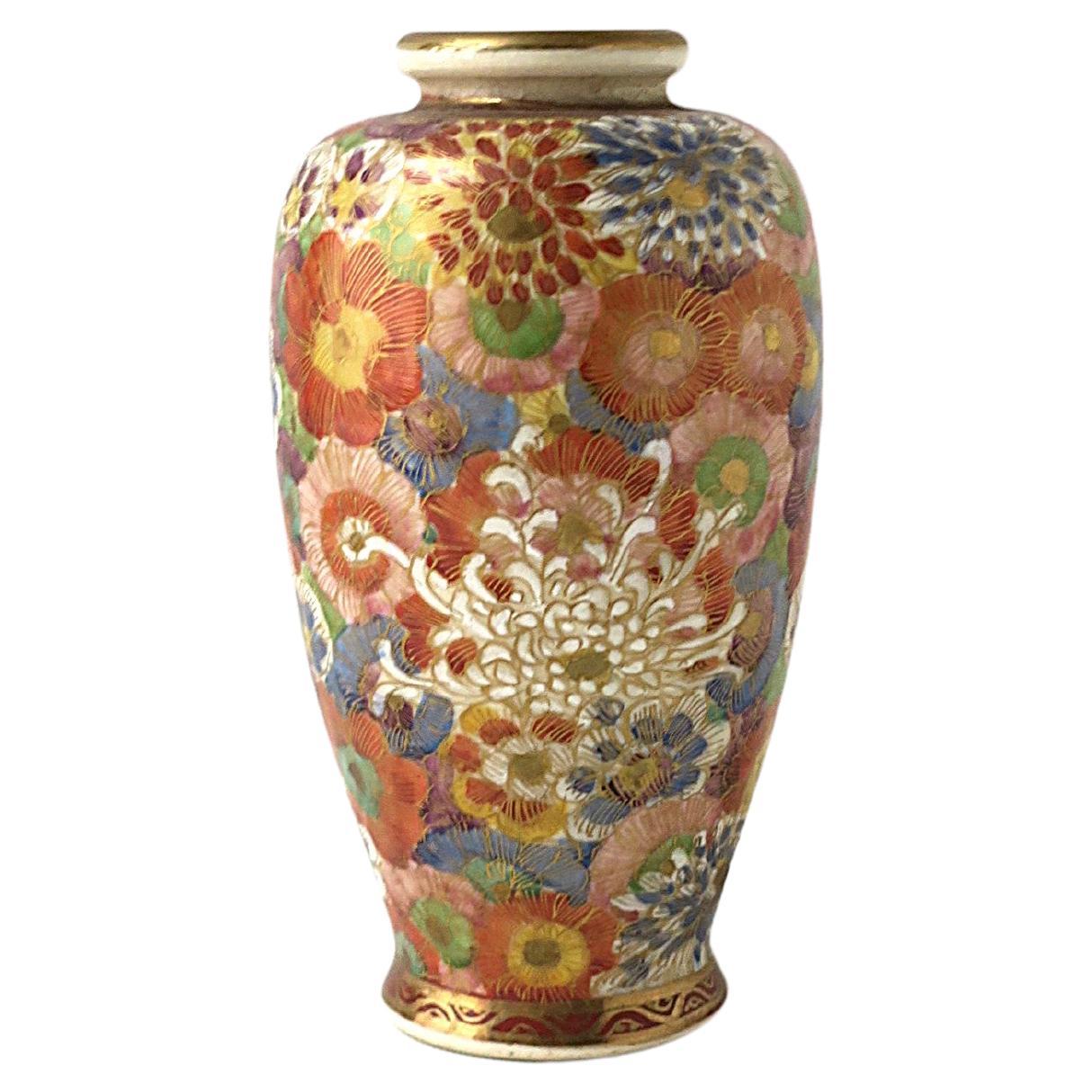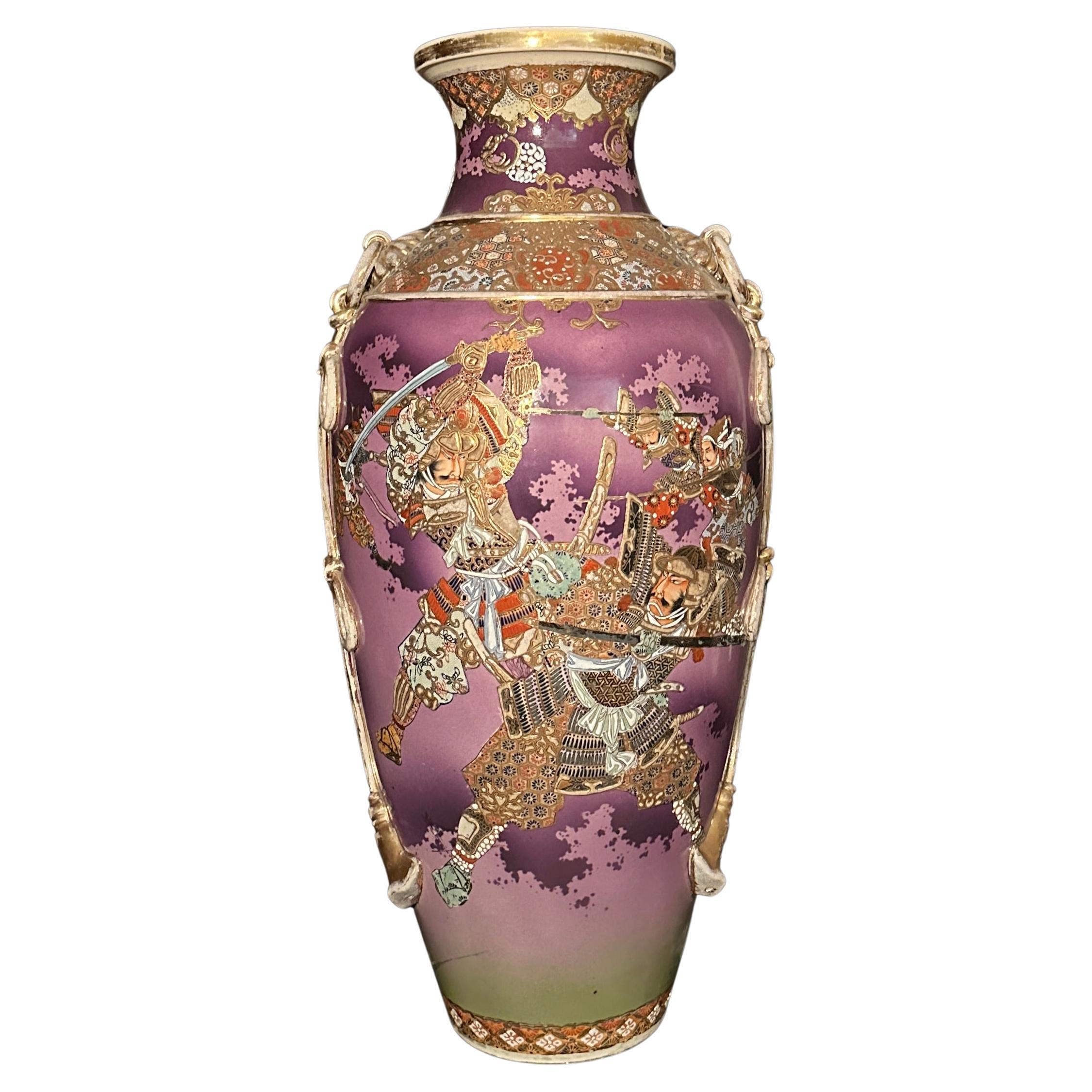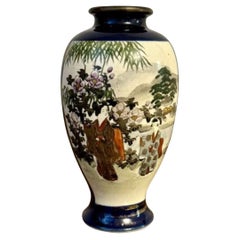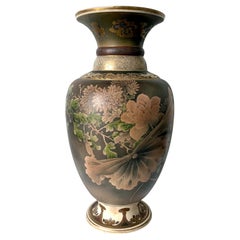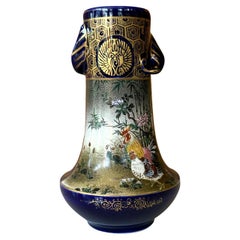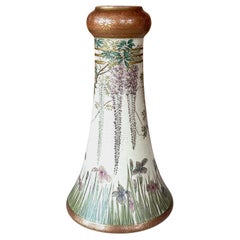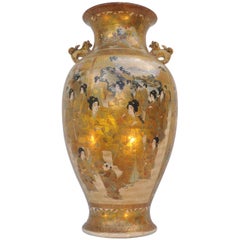
Important Satsuma Baluster Vase
View Similar Items
1 of 10
Important Satsuma Baluster Vase
$3,359.81List Price
About the Item
Authenticity Guarantee
In the unlikely event there’s an issue with an item’s authenticity, contact us within 1 year for a full refund. DetailsMoney-Back Guarantee
If your item is not as described, is damaged in transit, or does not arrive, contact us within 7 days for a full refund. Details24-Hour Cancellation
You have a 24-hour grace period in which to reconsider your purchase, with no questions asked.Vetted Professional Sellers
Our world-class sellers must adhere to strict standards for service and quality, maintaining the integrity of our listings.Price-Match Guarantee
If you find that a seller listed the same item for a lower price elsewhere, we’ll match it.Trusted Global Delivery
Our best-in-class carrier network provides specialized shipping options worldwide, including custom delivery.You May Also Like
Quality antique Japanese Satsuma baluster shaped vase
Located in Ipswich, GB
Quality antique Japanese satsuma baluster vase, having a quality antique Japanese satsuma vase with wonderful hand painted decoration of figural and landscape scenes in blue, gold, b...
Category
Early 20th Century Japanese Vases
Materials
Ceramic
Large Japanese Satsuma Ceramic Vase Kinkozan
By Kinkozan
Located in Atlanta, GA
A large Japanese ceramic vase from the end of Meiji period circa 1890-1910s by Kinkozan (1645-1927). One of the largest studio manufacturers of the export ceramics at the time based in Kyoto. In the typical style of satsuma made at the turn of 20th century, the vase is elaborately decorated with a rather unusual kinran-de (gold paint) and green enamel highlight on a mottled brown background. The painterly decoration depicts a large seasonal floral arrangement in a circular fashion. Besides the obviously superb craftsmanship, what sets this particular vase apart from many lower quality and mass-produced pieces is its tone-on-tone color pallet that is visually somber and the small and sensitive details that heralds the change of the seasons. When the viewer goes beyond the first casual glimpse of the blossom and foliage, one would notice that on the edges of certain leaves as well as along the stalks, there accumulates a very thin layer of the white dust that represents the frost. The flower in bloom are chrysanthemums. Despite of being splendid, they are the messengers of the autumn. The large lotus leaf was subtly rendered in a bended and slightly withered manner, just past its prime. Although the lotus is still in bloom, the prominent seed pod indicates it may be the last for the season. The sentimental capture of the change of the seasons is not unusual in Japanese art. This vase poetically represents such a subtle transition from summer to fall, perhaps depicting the very first frost.
The neck of the vase is also slightly unusual with two rolled rings...
Category
Early 20th Century Japanese Meiji Ceramics
Materials
Ceramic
Fine Japanese Ceramic Satsuma Vase by Kinkozan
By Kinkozan
Located in Atlanta, GA
A miniature Japanese ceramic vase from the end of Meiji period circa 1880s- 1910s by Kinkozan (1645-1927). One of the largest studio manufacturers of the export ceramics at the time ...
Category
Early 20th Century Japanese Meiji Ceramics
Materials
Ceramic
Fine Japanese Enameled Satsuma Vase by Kinkozan Meiji Period
By Kinkozan
Located in Atlanta, GA
A ceramic satsuma ware vase with very fine surface decoration made by Kinkozan circa 1880-1900s of late Meiji Period. The vase is of an elegant and relatively rare form with a trumpet shape body and the so-called garlic neck and opening. The surface is exquisitely decorated in a floral scheme with gilt and a light jewel-tone enamel. The top part showcases large bundles of wisteria blossom in white and purple, cascading down from a gilt wood trellis...
Category
Antique 1880s Japanese Meiji Ceramics
Materials
Ceramic
Antique Japanese Meiji Period (1868-1912) Satsuma Vase by Kinkozan
By Kinkozan
Located in Newark, England
Signed Kinkozan 金光山
From our Japanese collection, we are delighted to offer this Japanese Satsuma Vase by Kinkozan. The vase is potted in globular form with a tightly pinched neck and rolled top rim beautifully decorated with four highly detailed individual panelled scenes. The first a Geisha baring a gilt basket with her child playing with a fan infant of a gilt fence encompassing blossoming foliage and bamboo plants. The second scene depicts two birds, a Red Headed Japanese Wood Pigeon and a white dove in the foreground with a similar gilt fence with blossoming kiku flowers (chrysanthemums). The third scene is painted as a bustling village community with multiple figures going about their daily jobs, a central Palanquins can be seen with two figures carrying a seating figure. To the background a mountainous river landscape can viewed bordering the top left corner. The final scene appears similar to the opposing one with birds swooping high above a polychrome Japanese...
Category
Antique Late 19th Century Japanese Meiji Vases
Materials
Ceramic, Earthenware, Pottery
Pair of Kinkozan Satsuma Vases with Gold Kinrande, 19th Century
By Kinkozan
Located in Lisbon, PT
A pair of signed Sbei Kinkozan VII Satsuma polychrome porcelain vases with gold standard (kinrande) from Kyoto, Imperial City, Japan.
Kyo Satsuma ceramics contain intricately detail...
Category
Antique 19th Century Japanese Meiji Vases
Materials
Porcelain
$4,041 Sale Price / set
28% Off
Recently Viewed
View AllMore Ways To Browse
Japanese Satsuma Dragon Vase
Mid Century Art Glass Vase
Brown Glass Vase
Large Vase Ceramic
Vintage Glazed Ceramic Vase
French Art Deco Bedroom Furniture
Circa Vase
Midcentury Modern Bedroom Set
Vintage Pottery Vases
Hand Painted Antique Vases
Vintage German Bedroom Furniture
Red Decorative Objects
Mid Century Danish Bedroom Furniture
Art Nouveau Deco
Murano Green
Hand Blown Glass Vessels
French Style Vase
Green Turquoise
